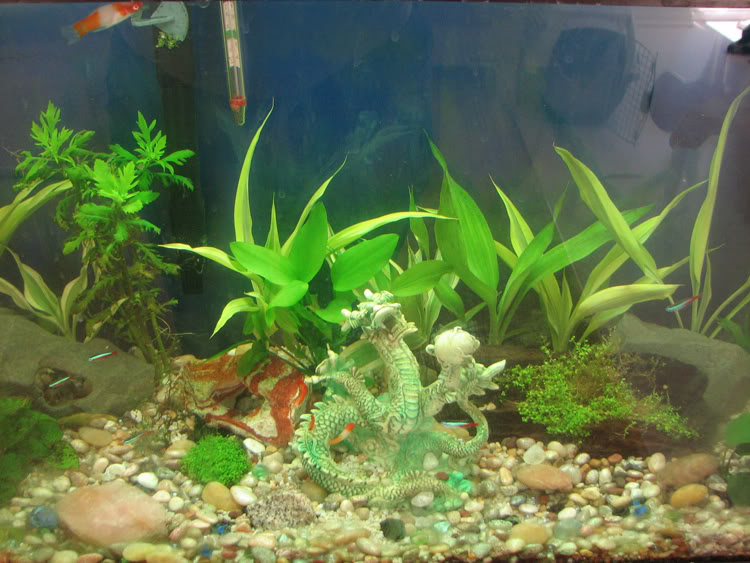I've kept freshwater fish for several years, but I've only just started trying to keep plants. I got hooked when I tried a 5 gallon tank with a big baby tears plant, some ghost and cherry shrimp, and four small fish. It looked great, so I decided to add plants to my 29 gallon tank. It was wonderful for about 3 weeks, but now there's an algae explosion! I have hair algae, black slime algae, green slime algae, and a reddish brown stuff that's really difficult to scrub off the glass. My fish love the extra food, but it's time for it to go. So, I read a book on aquarium plants, and I've come up with a plan. I'd really like to hear what you guys think before I try this, since I'm very new to keeping plants and this will be a lot of work.
Here's what I'm thinking:
1) Get the plants healthier, in general, so they out-compete the algae and use up all the nutrients. To do this, I'm planning to install a substrate heater, add a thin layer of Eco-Complete substrate instead of using liquid fertilizer, add a little laterite, use a finer substrate to allow better rooting, remove the plants that require high light, and replace them with moderate to low light plants. (I have a 65 Watt compact florescent setup for a 29 gallon tank).
2) Get rid of excess phosphates, using PhosRid.
3) Add lots of algae-eating shrimp. (I hope my fish won't just eat these guys. I'm planning on adding cherry shrimp to a tank with glass cats, a cory cat, cardinal tetras, a small rainbowfish, and two weather loaches. I may remove the loaches, first.)
4) Interrupt photosynthesis. I've read that getting an automatic timer and turning off the aquarium light for 2 hours in the middle of the day, each day, interrupts algae photosynthesis without harming the plants.
... so... What do you think? Will this do it? Any other ideas?
Here's what I'm thinking:
1) Get the plants healthier, in general, so they out-compete the algae and use up all the nutrients. To do this, I'm planning to install a substrate heater, add a thin layer of Eco-Complete substrate instead of using liquid fertilizer, add a little laterite, use a finer substrate to allow better rooting, remove the plants that require high light, and replace them with moderate to low light plants. (I have a 65 Watt compact florescent setup for a 29 gallon tank).
2) Get rid of excess phosphates, using PhosRid.
3) Add lots of algae-eating shrimp. (I hope my fish won't just eat these guys. I'm planning on adding cherry shrimp to a tank with glass cats, a cory cat, cardinal tetras, a small rainbowfish, and two weather loaches. I may remove the loaches, first.)
4) Interrupt photosynthesis. I've read that getting an automatic timer and turning off the aquarium light for 2 hours in the middle of the day, each day, interrupts algae photosynthesis without harming the plants.
... so... What do you think? Will this do it? Any other ideas?


